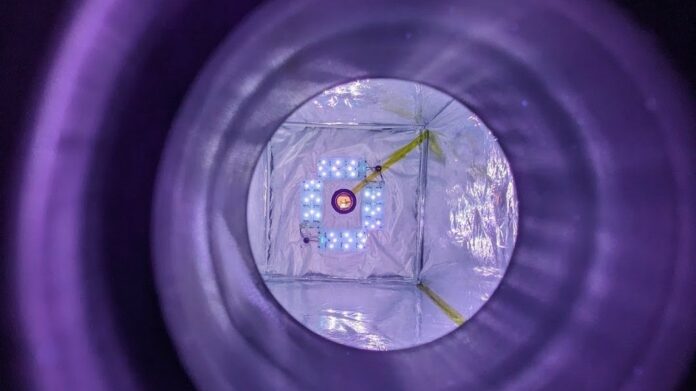Methane is a greenhouse gas that is crucial in atmospheric processes, air pollution formation, and the atmosphere’s oxidizing ability. However, limited methods are available to efficiently and cost-effectively remove methane from waste air, especially at the low concentrations found in emissions from sources like wastewater treatment, livestock production, biogas production, and mine ventilation.
A new study by the University of Copenhagen scientists presents the first results of a novel method using chlorine atoms in the gas phase, achieving high efficiency.
Scientists have utilized light and chlorine to eliminate low-concentration methane from the air. This development brings us a step closer to effectively removing greenhouse gases from places like livestock housing, biogas production plants, and wastewater treatment plants, ultimately benefiting the climate.
Many methane emissions originate from numerous low-concentration sources, such as cattle and pig barns. Historically, concentrating or removing methane from these sources has been challenging. However, the recent success in using a reaction chamber demonstrates that it is now possible to concentrate methane from such sources into higher levels or remove it effectively.
Methane can be burned off if it makes up more than 4 percent of the air, but most human-caused emissions are way below 0.1 percent, making burning ineffective. To tackle this, scientists created a reaction chamber that breaks down methane in the air, removing a significant amount of the gas. The chamber, resembling a metal box with hoses and instruments, triggers a chain reaction of chemicals to accomplish this.
Matthew Stanley Johnson said, “In the scientific study, we’ve proven that our reaction chamber can eliminate 58 percent of methane from air. And, since submitting the study, we have improved our results in the laboratory so that the reaction chamber is now at 88 percent.”
Chlorine plays a crucial role in this discovery. By employing chlorine and harnessing light energy, scientists can remove methane from the air much more efficiently than the natural atmospheric process, which typically takes 10-12 years. Through this method- named the Methane Eradication Photochemical System (MEPS)- scientists can trigger a reaction and break down the methane roughly 100 million times faster than in nature.
The Department of Chemistry is anticipating the arrival of a 40ft shipping container, which will serve as a larger prototype of the scientists’ laboratory-built reaction chamber. This “methane cleaner” is designed to be connected to a livestock barn’s ventilation system, showcasing the technology’s practical application.
Journal Reference:
- Morten Krogsbøll, Hugo S Russell et al. A high-efficiency gas phase photoreactor for eradication of methane from low-concentration sources. Environmental Research Letters. DOI: 10.1088/1748-9326/ad0e33
